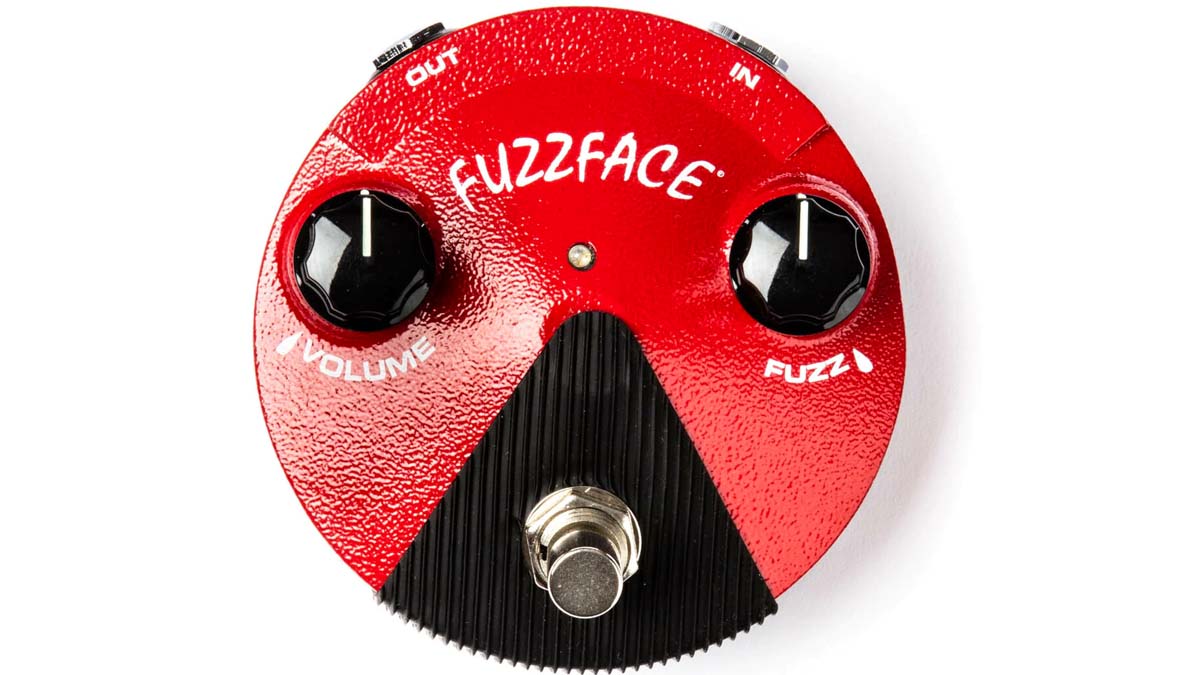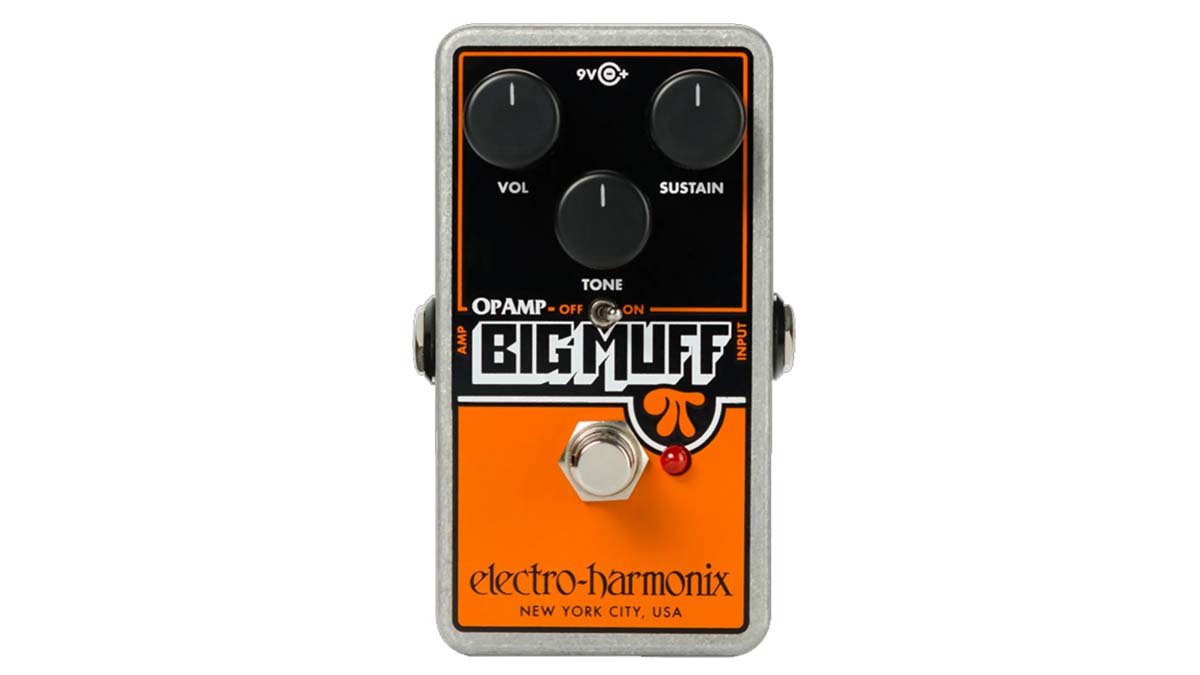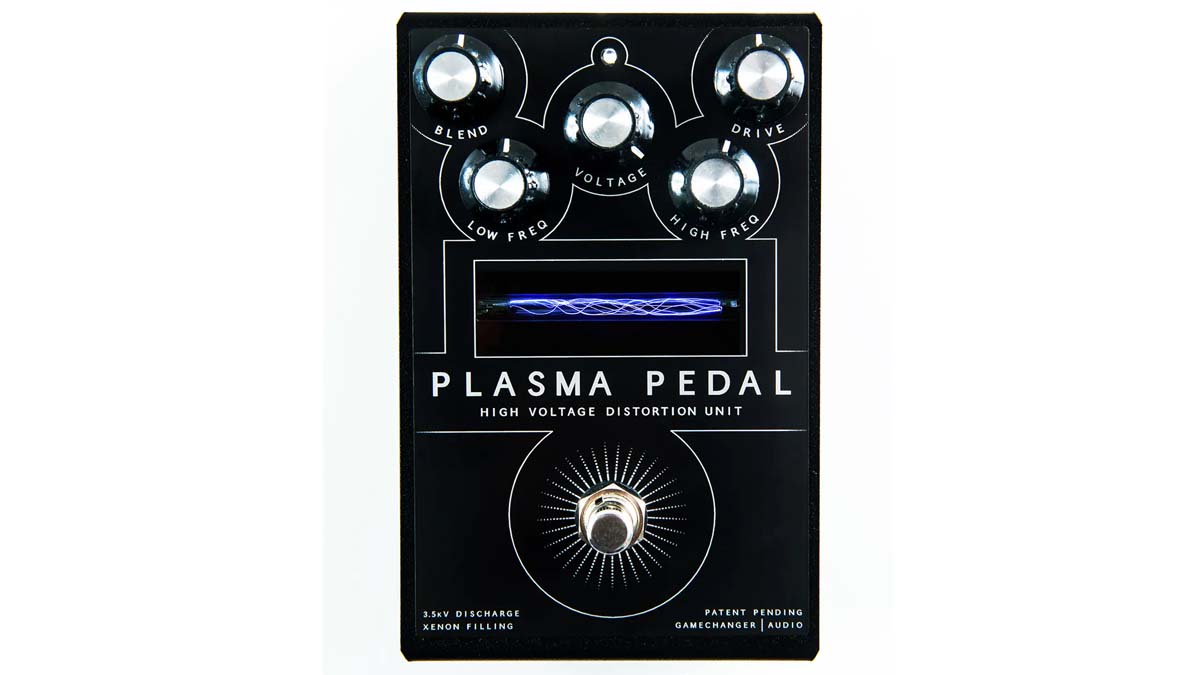5 fuzz pedals guitar players need to try
What kind of fuzz player are you?

The sound of fuzz is the sound of rock. Every generation, a new wave of players discover and redefine this classic effect.
Whether you're inspired by the Stones, Hendrix, Dinosaur Jr, Sonic Youth, The Smashing Pumpkins, Muse, St Vincent, Silversun Pickups, Royal Blood or Deftones, you're listening to players using fuzz pedals.
It's pretty common to see a fuzz and a distortion on rock boards, and the edge-of-breakdown tones that the right fuzz can bring to your sound make it worth making space for. Different fuzzes have vastly different 'personalities'. If you're fond of rabbit holes, then searching for the perfect fuzz is an obsession that can absorb years of your life.
Fuzz pedals: A history in brief
Getting meaner, more aggressive sounds in rock n' roll has been nothing short of a sixty-years-and-counting arms race.
Early rockers like Chuck Berry, Link Wray and Paul Burlison, among others, tried everything they could think of to get a grittier tone. They pushed tiny amps to their volume limits, stacked cabs from floor to ceiling, took razor blades to speaker cones and put metallic objects near the drivers to try and create more noise. However, it was the fuzzbox that blew rock guitar into the stratosphere.

• 5 overdrive pedals guitar players need to try
• More: 8 cheap but great guitar overdrive pedal alternatives to boutique classics
Most of the pedals we call overdrives or distortions are based on the operational amplifier, an integrated circuit – IC, or 'chip' to most – which didn't come along until 1967. Even after that, it took some time to make its way into guitar effects.
What was plentiful before then was transistors, which, when pushed to their limits, run out of headroom and clip the guitar signal. This tends to generate a splatty, well, 'fuzzy' sound. The Maestro FZ-1 Fuzz Tone, manufactured by Gibson, was the first commercial fuzz, released in 1962.
Want all the hottest music and gear news, reviews, deals, features and more, direct to your inbox? Sign up here.
It took its name from Grady Martin's instrumental song The Fuzz, so-named for the sound he got from the faulty preamplifier used to record it. Not all fuzzes use transistors, but, generally speaking, it's a good rule of thumb when trying to classify a circuit.
Before transistors, the only real game in town for audio amplification was vacuum tubes. Transistors are much smaller than tubes, don't heat up to the same degree, and require much less power to operate. These things combined mean that small amplification circuits could be built into a small enclosure, and used on stage.
There are innumerable different models of transistors, but for our purposes only one thing matters. That's what semi-conducting element they are made from. Some transistors are germanium, and some are silicon. Germanium tend to sound 'warmer', or even 'woolier', whereas silicon are 'brighter' and more 'precise' in sound.
The difference between transistors in a batch of germanium transistors can be very marked, especially in terms of gain. This is the reason Hendrix 'auditioned' germanium-powered Fuzz Faces
Silicon are preferred for most electronic applications, as they can handle higher junction temperatures and be manufactured to tighter tolerances. Germanium transistors are temperamental, sensitive to temperature changes and prone to quirks like picking up radio signals.
The difference between transistors in a batch of germanium transistors can be very marked, especially in terms of gain. This is the reason Hendrix 'auditioned' germanium-powered Fuzz Faces, and why boutique builders often go to great lengths to 'match' germanium transistor pairs.
Nevertheless, germanium transistors remain popular, particularly for more eccentric and experimental uses, as well as for getting vintage-correct tones.
1. Fuzz Face Mini Germanium (£127 / $129)
Good enough for Hendrix

Why try?
- An early classic
- Expressive and unpredictable
- Easy to get great tones from
- Actually will fit on your pedalboard
The Fuzz Face Mini combines many of the things that made the simple, yet effective germanium Fuzz Face circuit so compelling.
The controls are highly interactive with one another, the pedal reacts strongly to nuances of the guitar signal, and of course, it's got all the sputtering craziness of germanium transistors. Marry that to a modern power circuit design so that it can be used with a standard power supply, and you have a winner.
If you've ever seen one of the original Fuzz Face pedals, or indeed a reissue, you'll agree that they're massive. Pop one open, however, and you'll find a tiny PCB and a handful of components. Even before modern, multi-layer designs, it wasn't hard to make a mere two transistors, two capacitors, and four resistors fit on a small PCB. As a result, the enclosure size, while a curiosity, has always puzzled us.
In any case, it's the simplicity of this circuit that appeals. Its expressive capabilities, especially when stacked with other drives and boosts, make it a deep and satisfying fuzz to this day.
Alternatives
TC Rusty Fuzz
Fuzz Face Mini Silicon
2. EHX Big Muff Op-amp Reissue (£75 / $80)
The (Siamese) Dream

Why try?
- A very different circuit to the standard Big Muff
- Easy to fit into a band mix
- Almost nothing sounds as huge
Though the enclosures are superficially similar, the EHX Big Muff has almost more versions than we can count. As a result, while it's true to say that every player should try a Big Muff, and see if they get on with its wall-of-sound, vacuum-cleaner distortion tone, it's also important to specify which Big Muff.
Although the big Muff is based around transistor amplifier stages, it generates its unique tone by soft clipping in the amplifier feedback loops, not by smashing the stages. This is also true of the op-amp version, which, as the name suggests, uses an op-amp in lieu of transistors. This goes to show that although the link between transistor headroom and fuzz works, even some of the most famous fuzzes don't follow the rule.
When we were coming up, the only EHX Big Muff that was commonly available was the NYC big-box version. To our ears at least, this is the most middle-of-the-road of the various Big Muff variants. Some retailers, particularly in the US, carried the Black Russian big-box variant, which we much prefer.
To our minds though, king of the Big Muffs is the weirdo op-amp Big Muff, produced for a short period at the end of the 70s. Apparently due to transistor availability, the circuit was redesigned around a two-stage op-amp, with a distinctive clipping diode pattern.
The EHX Big Muff Op-amp came to define the Siamese Dream sound, and that era of the Smashing Pumpkins
Though the circuit was not particularly popular at the time, players in the doom scene rediscovered cheap vintage units many years later. A young player, Billy Corgan, heard his friend's band Catherine using the op-amp Muff, and scoured pawn shops in Chicago until he found one.
This pedal came to define the Siamese Dream sound, and that era of the Smashing Pumpkins. Whether due to coyly protecting a trade secret, or genuinely not being able to tell vintage Muffs apart, for many years the secret of their sound was as simple as "some Big Muffs sound right, and some don't."
Now however, EHX have reissued the op-amp Muff, and the sound can be yours over the counter.
Alternatives
ProCo RAT
Way Huge Russian Pickle
EHX Big Muff Reissues
Z-Vex Fuzz Probe (£209 / $239)
Taking experimental to the next level

Why try?
- It's got an copper antenna expression pedal
- ...is that not enough?
- It's also a fully functioning Fuzz Factory
The Fuzz Probe is a development of Z-Vex's stunning Fuzz Factory design. Zachary Vex's Fuzz Factory came along at a time when there wasn't really such a thing as boutique pedals in the modern sense. The Fuzz Factory and Super Hard-On boost put Z-Vex on the map as an early innovator in the pedal scene.
The Fuzz Factory is essentially a turbo-charged germanium Fuzz Face with potentiometers placed at bias points in the circuit. It's a crazy, inspirational and unhinged pedal, which every player should try. In fact, as it's only fifteen-odd parts, it's also a good candidate for a DIY-project, and many mods have been made to it by the DIY community.
The Fuzz Factory is essentially a turbo-charged germanium Fuzz Face with potentiometers placed at bias points in the circuit. It's a crazy, inspirational and unhinged pedal, which every player should try
Not to be outdone, of course, Z-Vex have their own modified version of the Fuzz Factory, and it's this. A copper antenna controls the 'stab' bias pot – generally seen as the most interactive and strange of the Fuzz Factory's controls. This means that, when engaged, with a hand or foot you can control the strange oscillations and feedback that the pedal generates. Well, attempt to control, anyway.
The only catch with the Fuzz Probe is that, like the Fuzz Factory, it needs to be before any buffered pedals in your signal path in order to interact with the guitar and create its wild oscillations and feedback. In the middle of a complex signal chain, the Fuzz Probe is just a normal Fuzz Factory with a heavy paperweight attached.
Alternatives
Zvex Fuzz Factory
4. Walrus Audio Janus (£283 / $289
A joy to use

Why try?
- A great fuzz and tremolo in one
- Both circuits have joystick control
- Various switchable options
- Great on keyboard parts
Especially when there's criminally underrated fuzzes out there like the Smallsound/Bigsound Buzzz, or Caroline Wave Cannon, it may be a case of style over substance to include a Big Muff clone in this list. On the other hand, the Janus does have two joysticks.
There's not much to say about the circuit itself – it's a Big Muff with some modifications. The three-way switch controls different clipping modes, while the bass switch changes the filtering slightly, which works better for bass and keys.
The real selling point of the pedal is, of course, the joysticks. Now, other builders may have got there first – Devi Ever and Dwarfcraft, by our reckoning – but the Janus is the only one that's still in production.
The right joystick works with the fuzz. Left is low gain, right is high, and the Y-axis controls the tone pot.
For guitar this proves perhaps a bit of a novelty, as on a Big Muff style-fuzz, you're likely to have the sustain close to maxed most of the time. However, the tone control allows you to make expressive filter sweeps - but only if you have the pedal within arm's reach!
The left joystick controls the tremolo, with up being a fast rate, down a slow rate, left a shallow depth, and right a greater depth.
The pairing of tremolo and fuzz might not seem that useful, but especially at slower tremolo speeds, the tremolo is pretty musical and cool for dream-pop style guitar parts. Where it shines of course is on keyboards, where suddenly a joystick-controlled trem makes total sense.
Alternatives
Walrus Audio Jupiter
EHX Big Muff Reissues
5. Gamechanger Audio Plasma (£269 / $299)
Game-changing indeed

Why try?
- Look at it!
There's a lot of hype in the guitar pedal world over things that don't deserve it. Not naming any names, but making another Tube Screamer clone with clipping options isn't that impressive. Still, sometimes a hype wave arrives with something genuinely novel, and that's true of Gamechanger's Plasma pedal.
Its core distortion sound is the result of clipping caused by high-voltage discharges as the signal runs through a tube of Xenon gas. Although it's marketed as a distortion unit, the spiky, aggressive tone it generates is much more akin to a fuzz in many ways, hence why we've included it here.
None of the pictures or videos do it justice – when it's in the room with you it's one of the most exciting and cool pieces of gear you'll ever handle. In terms of sheer, childlike buzz, it's probably only topped by something timeless and cool like a tape echo machine. When the tube is glowing, and the riffs are flowing, there's nothing like it.
The tone is completely unlike anything else – even a Fuzz Probe on its maddest day doesn't come close. The Plasma sounds like nothing so much as a static discharge resembling your guitar signal. Fully wet, it's a piece of quite mind-bending sound design kit.
Unfortunately though, the reality of the Plasma pedal is that, to our ears at least, it's a bit too fizzy and unmusical in timbre to be worth the cost.
It's fantastic for an isolated lead – a static discharge is a cool sound in isolation – but you struggle to find a sweet spot to get a tone that can sit in a band mix. There's no denying though, that it is genuinely one-of-a-kind, and worth trying.
Alternatives... None, really.
Alex Lynham is a gear obsessive who's been collecting and building modern and vintage equipment since he got his first Saturday job. Besides reviewing countless pedals for Total Guitar, he's written guides on how to build your first pedal, how to build a tube amp from a kit, and briefly went viral when he released a glitch delay pedal, the Atom Smasher.
